SCHOCH TILE
VINYL
Resilient Beauty
Vinyl By Schoch
Click Each Section For More Details
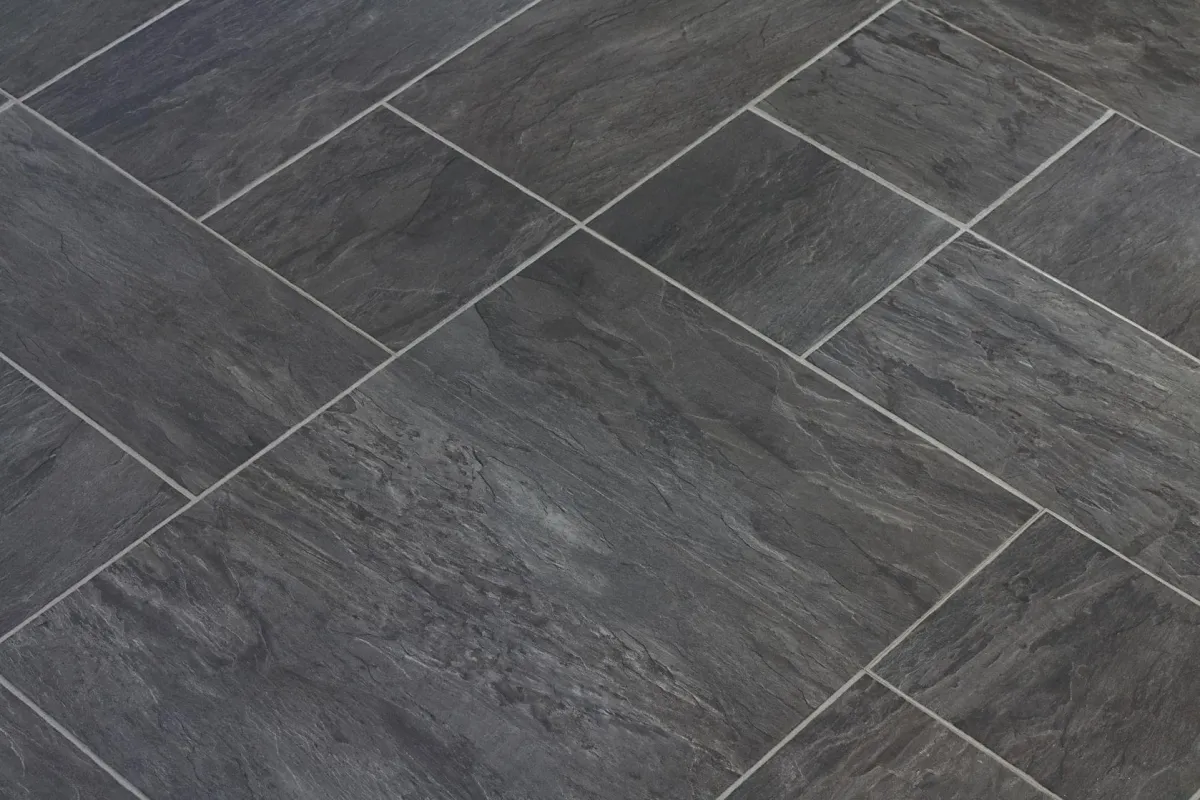
WELCOME TO THE UNIQUE AND SURPRISING WORLD OF VINYL FLOORING.
Vinyl flooring, also known as resilient flooring, is called this because as the name implies, these have some “give” or elasticity when you walk across them. Resilient floors are often used in kitchens and bathrooms because of their good looks, resistance to moisture, and their ability to offer a wide range of colors and textures. These floors are relatively easy to keep clean. No matter which resilient floor you choose, you will find stylish options, high performance, and tremendous value.
Thanks to some great advances in styling and technology, vinyl floors have been changed for the better. Vinyl flooring can now realistically mimic the look and textures of real stone and wood grain patterns. These amazing replicas have such incredible realism, it is difficult for most people to tell whether it is the real thing or not.
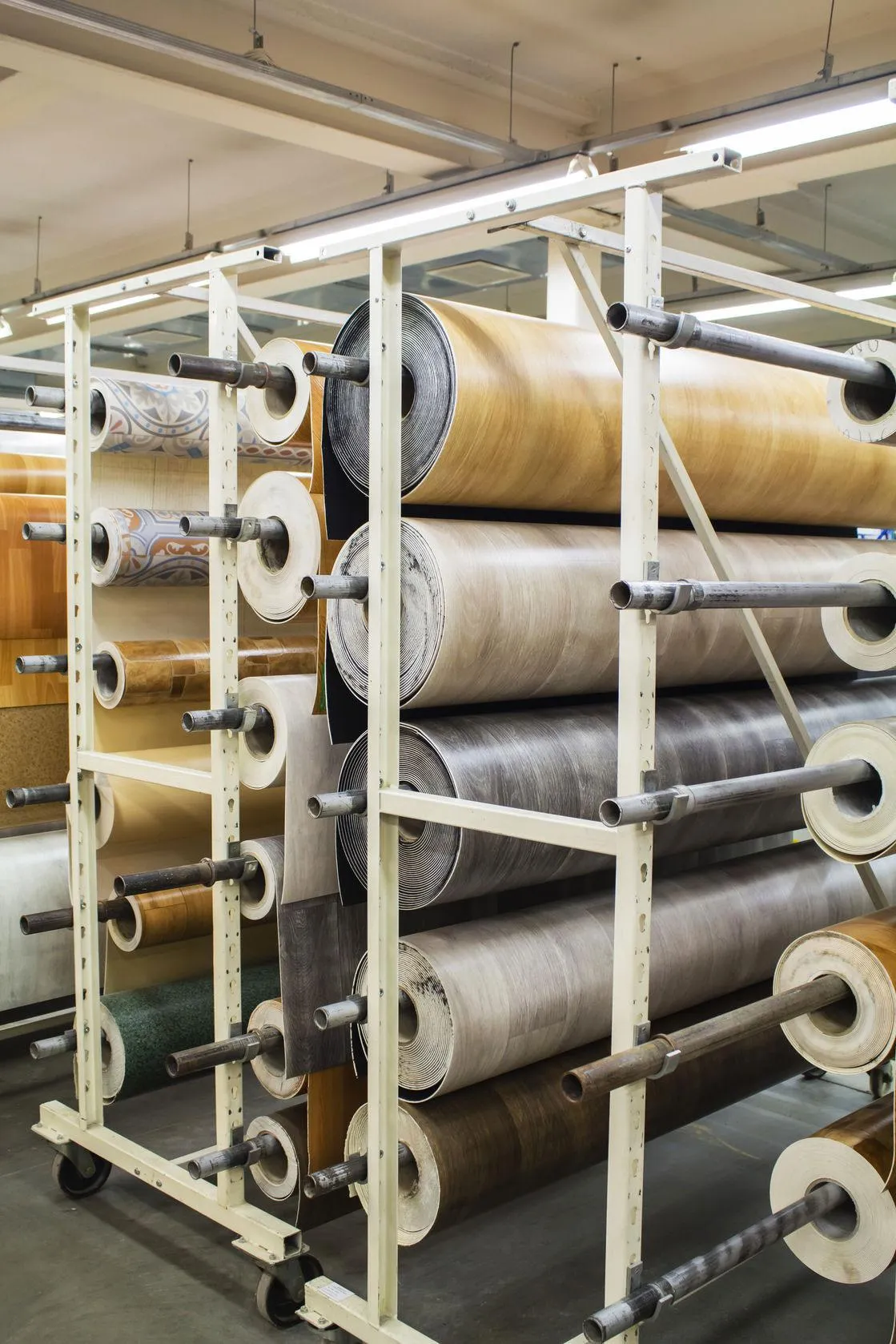
A LOOK AT HOW VINYL FLOORING IS MANUFACTURED.
The production of vinyl flooring uses highly sophisticated techniques and precise systems. The rotogravure printing process is the most commonly used method for making residential vinyl floors. This process includes a print cylinder that spins around while the vinyl’s core later, called the gel coat, passes underneath. The cylinder systematically prints various colored ink dyes to create the pattern.
UNDERSTANING WEARLAYERS.
After the print dyes are set, a clear wearlayer is applied to the surface. The appearance retention of a rotogravure vinyl floor is dependent on the durability of the clear wearlayer. The wearlayer is critical to the performance of your vinyl floor. The thickness of the wearlayer varies with each vinyl product collection. Generally, the more expensive vinyl floors have thicker wearlayers. The new generation of vinyl floors have all the ingredients to resist showing wear and staining, due to new and improved wearlayers.
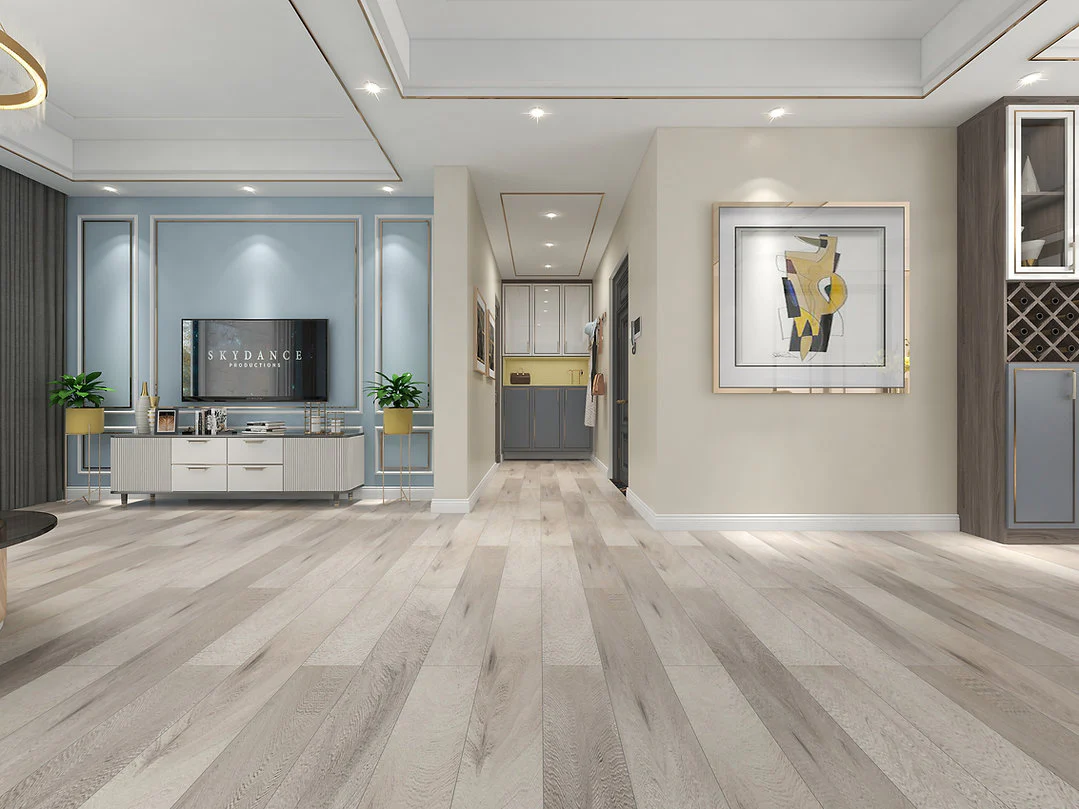
TODAY’S VINYL OFFERS VERSATILITY AND STYLE
Your vision of vinyl might be a little outdated. If when you hear vinyl flooring you see a small choice of colors and lack of interesting patterns, allow us to paint an entirely different picture for you. Today’s vinyl flooring has joined the ranks of tile, laminate, and carpeting in offering you beautiful products, a spectrum of colors, and virtually endless pattern and configuration options. Long gone are the shiny, plastic-looking floors that are easily dented and ripped. Many of these new stylish products emulate the look of natural stone, slate, or ceramic tile, and can fit into any budget.
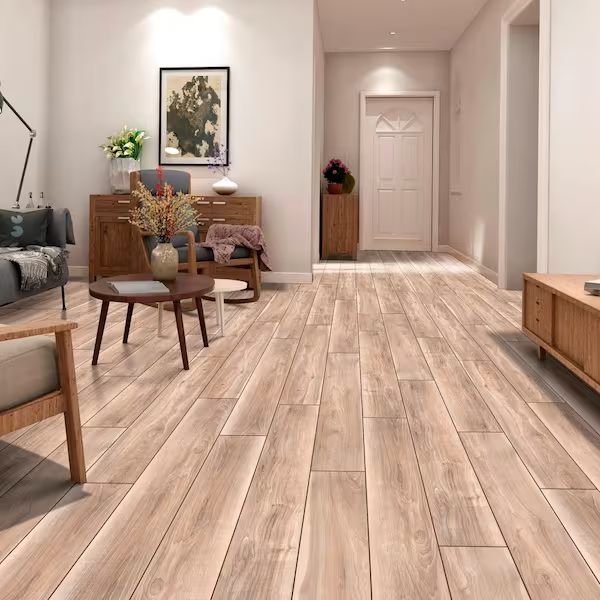
VINYL CAN BE ADDED TO ANY ROOM
Traditionally, vinyl flooring was found in kitchens, bathrooms, or laundry areas. This was because vinyl was a practical and functional option in active households. Today’s vinyl is known to be cushiony and warm underfoot and thanks to innovations in design and performance, vinyl flooring is at home in any room in your house.
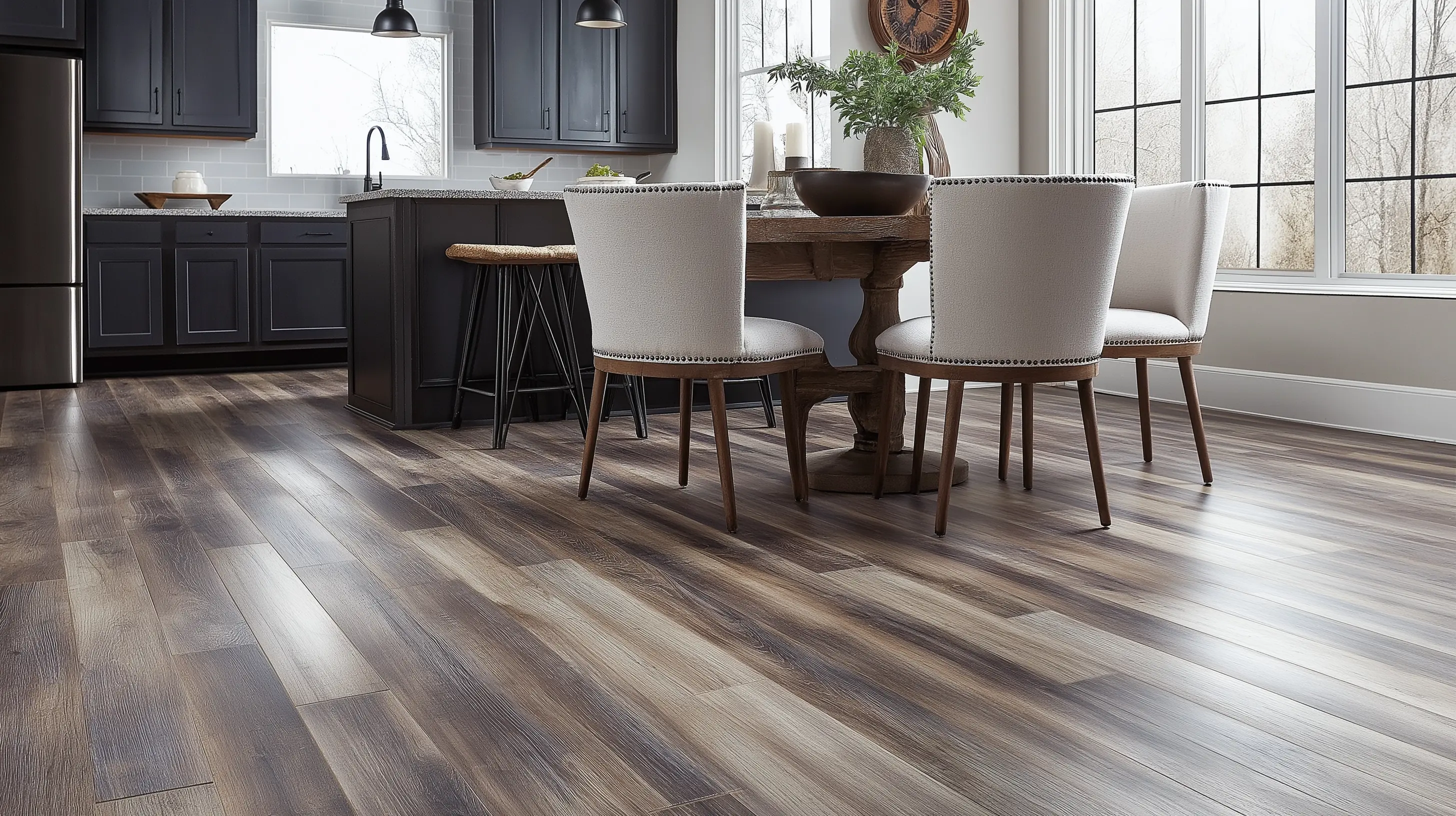
AS YOU BUY UP, THE BENEFITS ESCALATE
As you move up the vinyl flooring price range, there are many benefits. In terms of product selection alone, more versatile patterns, colors, and textures will be offered to you. Some premium vinyl offers premium wearlayers. These are enhanced with aluminum oxide, which provides exceptional resistance to scratching. Today’s premium wearlayers offer superior resistance to stains, scuffs, and scratches.
This is worth noting if you live in an active house with kids and/or pets. More importantly, these wearlayers make clean-up a breeze. You’ll also notice that as you move up in quality, you get enhanced performance constructions, designed to protect your floor from rips, tears, gouges, and permanent indentations.

TODAY’S VINYL FLOORING OFFERS WALL-TO-WALL BENEFITS
The vinyl offered today is quite different than the vinyl of yesterday. Advantages in construction and aesthetics have produced fashionable products that are both durable and affordable. Many of the popular patterns today are inspired by nature, including those that imitate the exquisite look of natural stone or wood grain. With the abundance of patterns and new methods of texturing the surface, very realistic vinyl looks have been achieved.
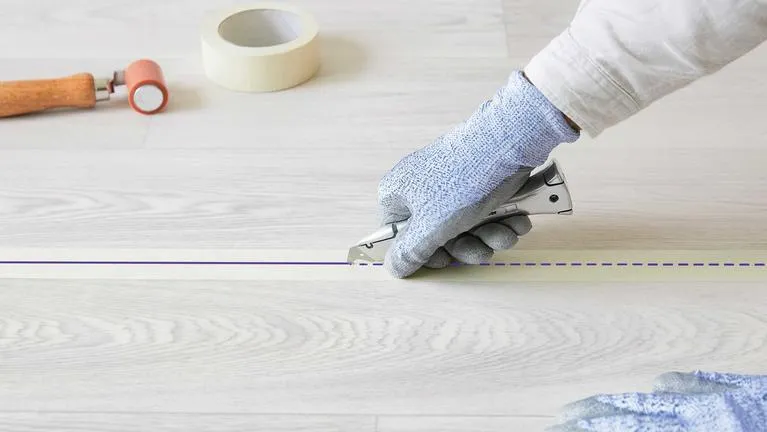
WHAT TO DO BEFORE INSTALLATION DAY
Remove all furniture and other objects from the area where the installation will take place. Be aware that the area of installation must be climate controlled. Indoor humidity should be maintained between 45-65%. Please consider how your old flooring will be taken up and disposed of. Remove all old floor covering at least one day prior to installation of your new floors. If removing old carpet, please leave tack strips in place and pull the staples out of the floor from the original pad. Prepare your existing subfloor or put in a new subfloor if needed. Make sure the subfloor is as clean and level as possible.
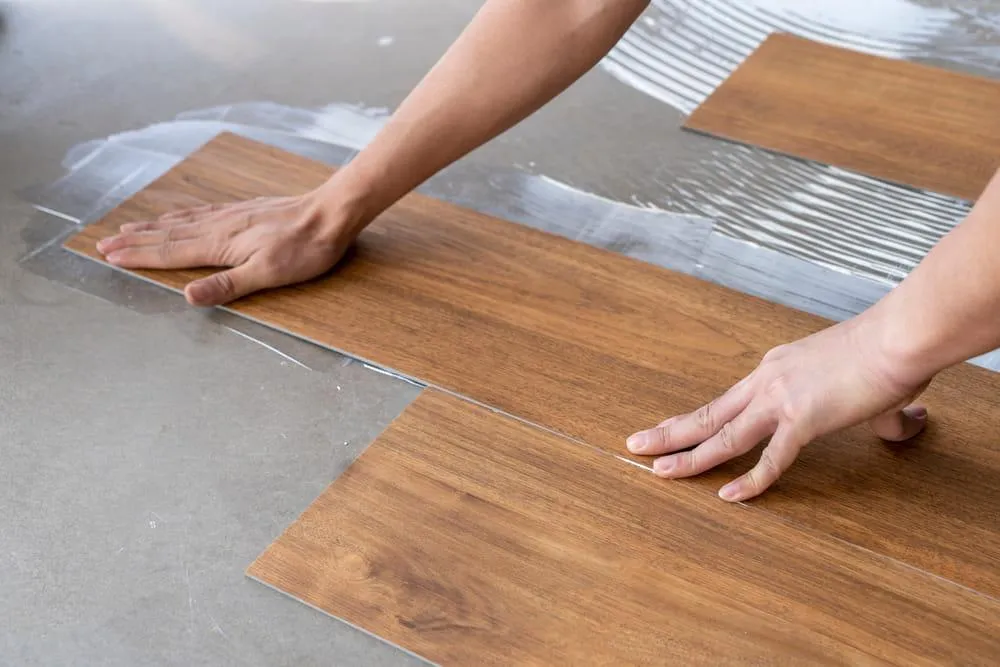
WHAT TO DO ON INSTALLATION DAY
Be prepared to be home on the day of your installation. Your installers will use a variety of tools and techniques that can make the work area hazardous, so make sure that children and pets are kept out of the work area on installation day. In some cases, moldings, and baseboards need to be removed for installation. We recommend that prior to the completion of the installation, you do a walk-through with the chief installer. This will give you the opportunity to ask any questions and to be clear on any final details.

WHAT TO DO AFTER INSTALLATION DAY
For a minimum of 24 hours after your new vinyl floor is installed, protect all seamed areas. Don’t walk on the floors or the seam sealer. Keep the room at 68 degrees or greater for at least two days after installation to allow the adhesives to set up properly. Good ventilation should be established for 48-72 hours after installation. If your vinyl floor was installed using the full spread or perimeter adhered methods, no appliances should be moved in for a minimum of 24-72 hours after installation. Light foot traffic is allowed after 24 hours. If the installers used the floating method, appliances can be moved in immediately and foot traffic can continue. Allow five days before thoroughly washing the floor. This will give time for the adhesive to cure.

CONSISTENCY IS THE KEY
New vinyl floors are extremely durable and long lasting, but like any floor covering, they still need regular maintenance to stay looking like new. Always refer to the manufacturer’s written floor care procedures. But there are general guidelines for vinyl flooring.
Remove dust, sand, and grit by frequently sweeping or vacuuming the vinyl floor. Don’t use a vacuum with a beater bar, as it may scratch the floor. The attachments that come with your vacuum are very useful for cleaning the edges or hard to reach areas.
When sweeping or vacuuming does not remove the dirt, mop the floor with clean, warm water. Rinse the floor thoroughly with fresh water. If water alone does not clean the surface, use cleaning products recommended by the manufacturer. If you are unable to determine the manufacturer’s recommendations, use one tablespoon of liquid dish washing detergent to one quart of water. You can also use one tablespoon of clean ammonia to one quart of lukewarm water. Make sure you rinse the surface to avoid leaving a film behind.
Place non-staining, walk-off mats and rugs at every outside entry to your room. This will help keep dirt, sand, and grit from being tracked onto your floor. Be sure to avoid using rubber-backed mats or rugs, as they can damage and potentially discolor your floor. Instead, use mats or rugs made especially for vinyl floors and remember to treat them accordingly.
Adhered
See Perimeter Adhered.
Aluminum Oxide
Added to the urethane finish for increased abrasion resistance of the wear layer.
Backing
Vinyl is constructed of several different layers: the wear layer, the printed or decorative layer, an inner core consisting of a foam and vinyl layer, and a backing. The type of backing determines how it can be installed.
Cork
The bark of a tree commonly known as Cork Oak and native to the Mediterranean region and the bark naturally splits every 9 to 15 years. It can be safely harvested causing no harm to the tree. Cork is naturally hypoallergenic and resistant to mold and mildew.
Decorative Layer
The rotogravure printing process offers a multitude of design possibilities that are expressed through the decorative layer such as patterns, geometrics, natural stone designs and more.
Floating
A method of vinyl flooring installation in which the flooring is not bonded to the substrate by any adhesive.
Full Spread
A vinyl flooring installation method in which the adhesive is trowled over the entire substrate.
Inlaid
A vinyl manufacturing process that uses solid colored vinyl chips laid on top of a carrier sheet and then bonded together with heat and pressure. The inlaid process has been around for years and generally results in geometric type patterns and designs.
Inner Core
Consisting of a foam and vinyl wear layer, the inner core provides durability, insulation and comfort.
Linoleum
Made of natural ingredients that include linseed oil, cork, limestone, wood flour and tree resins. The color goes all the way through, making it extremely wearable and durable.
Perimeter Adhered
A vinyl flooring installation method in which adhesive is only applied to the perimeter of the flooring and also at the seams.
Resilient
These floors have some "give" or elasticity when you walk across them. This category includes linoleum, cork, rubber and specialty resilient.
Rotogravure
The most commonly used method for making residential vinyl floors.
This process involves a print cylinder that spins around while the vinyl's core layer (called the gel coat) passes underneath. The cylinder systematically prints various colored ink dyes to create the pattern.
Rubber
Rubber flooring is extremely durable, virtually indestructible, quiet and warm to walk on. It also resists dents and stains and its waterproof surface has an anti-slip finish. However, rubber is relatively expensive and must be installed by an experienced installer for maximum performance.
Seams
Since vinyl comes in 6’ and 12’ widths, seaming may be necessary depending on the area to be covered. Certain patterns will hide seams better. For example, tile patterns with grout lines are better able to mask seams.
Seam Sealer
A thin liquid adhesive applied to the cut edges of carpet to lock in the tufts and prevent edge ravel. Seam sealers may be visible in contrast with different vinyl textures and finishes.
Subflooring
A rough floor on top of which the vinyl flooring is applied.
Substrate
The surface on which the vinyl flooring will be laid. If installing over a wood substrate, an underlayment will generally be necessary. A concrete substrate will not require an underlayment but will require some floor preparation.
VCT
Vinyl Composition Tiles. A resilient floor covering made of vinyl or vinyl composition materials. VCT has all the advantages of vinyl.
Vinyl
Made from a mixture of polyvinyl chloride and plasticizer, it is usually flexible and non-porous. Pigments are added for color.
Wearlayer
A layer of material applied to the top surface of vinyl flooring. The thickness of the wearlayer varies with each vinyl product collection, or series, and is generally measured in mils. The thickness of a mil is about the same as a page in a phone book. Premium wearlayers offer superior resistance to stains, scuffs and scratches. How long a vinyl floor will look new and fresh is based on the wearlayer's performance.
About Us
Transform Your Space with Top-Quality Craftsmanship
Contact Us
5282 Crookshank Rd, Cincinnati OH 45238
Phone (513) 922-3466
Copyright© 2025 Schoch Tile - All Rights Reserved.
